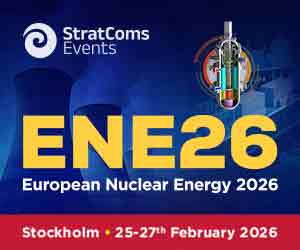Post - Blog
Digital Revolution: how blockchain is lagging behind investors’ expectations
- 6 years ago (2019-09-08)
- Junior Isles

By Robert Schwarz, Principal Consultant, ÅF Pöyry

European Nuclear Energy 2026
There is a lot of hype and noise around blockchain technology today. Distributed Ledger Technologies (DLT) have considerable potential and could disrupt and drive efficiency in the utility industry, however it is unclear if any of the ideas have come to fruition in a real-world environment. Despite the large levels of investment, here the question remains: when will we see scalable, commercial blockchain solutions that can drive real value in the utility industry?
In the energy sector we are seeing the development of blockchain picking up pace once again and proof of concepts being deployed successfully in sandboxes around the world. Two years ago, there were only a handful of start-ups in the energy business who were using blockchain for peer-to-peer trading, certificates of origin or other use cases. Today there are more than 100 active companies worldwide. In fact, in the last two years, the DLT industry has mobilised investment capital of more than USD 1.5bn with a focus on Europe, Asia, Australia and the US. So far, the scope of activities include energy, mobility and the Internet of Things, and the most promising use cases have proven to be peer-to-peer trading between customers of electricity suppliers, certificates of origin, green mining and renewable project financing. Unfortunately, the success of these use cases has meant that limited investments have been made in smart homes, energy efficiency and wholesale trading.
Maturity
Whilst we are seeing promising advances in blockchain usage, there is still a disconnect between funding and levels of commercial maturity. Most use-cases are struggling to advance from the proof of concept stage to pilot testing outside of a sandbox environment. Use cases around wholesale trading and digitisation of energy data are currently the most commercial, but peer-to-peer use-cases are receiving the most funding and attention in the energy market.
Start-ups, corporations and investors are all facing different scale-up challenges when developing their blockchain products. To accelerate DLT, there is scope for utility companies to actively encourage organisations to consider the commercial potential for blockchain and invest in them accordingly. Start-ups also need to be more focused on further technical challenges, scaling public blockchain, governance, regulation and energy markets. Investors are less sceptical than they were two years ago, but they still see the midterm commercial scale as 1-2 years ahead. Despite the flurry of activity, most blockchain applications are evolving at a slower pace than investors would like. The hype around blockchain is subsiding so now there is more pressure on start-ups and innovators to demonstrate their value. Early-movers must also mature and bring their offerings to a precommercial scale.
Growth
Industry research and increased regulation would help companies to adjust and compare their “go to” market strategies, competitive advantages with the existing solutions, their potential for revenues, and the impact on their business model. The Energy Web Foundation (EWF), the largest blockchain non-profit ecosystem for the energy industry, provides a basis for the targeted implementation of use cases. The EWF is attracting affiliates (>100 start-ups, incumbents and multinational players) from all over the globe, in what will be the hotbed for cutting-edge use business cases in energy. The EU also founded the International Association of Trusted Blockchain Applications (INATBA) in April 2019. Open source platforms and international associations like INATBA could push advancement in DLT.
The EWF Chain’s test network, “Tobalaba” will go live with version two and transition out of its test phase this year. The updated EWF Web Chain is expected to provide a scalable, low-cost, enterprise-grade platform that utilities and start-ups alike can use to develop dApps and adopt commercial blockchain-based apps. The industry should view “Tobalaba” as a case study which it can learn from and which could lead to further innovation.
Opportunity
Blockchain technology is still far from a commercial rollout in the energy industry. Although companies are now investing in DLT, the applications are yet to reach maturity and to produce a significant return on investment. Increased regulation and research will aid new start-ups to develop scalable solutions and build upon the experience of other companies. As it stands, it will be a few years before we see the technology’s real impact in the utility industry.
Robert Schwarz:
Robert Schwarz is a Principal Consultant at ÅF Pöyry with more than 20 years of experience in the energy sector. His track record includes more than 100 successful projects in Europe. He started his professional career at Roland Berger, Siemens Business Services and PriceWaterhouse, and worked for ten years as an executive manager on projects with an energy focus. Robert has more than 10 years of M&A experience in several international deals; he is a valuations expert and serves as mentor and coach to start-up companies in digital solutions as DLT. Robert holds a Masters in Business Engineering from the University of Applied Sciences, Berlin.
